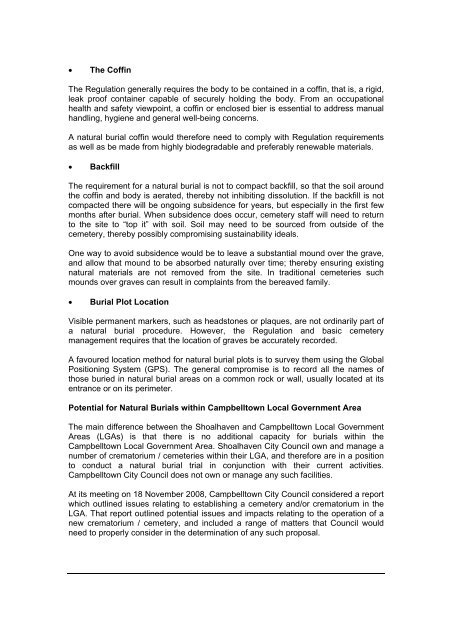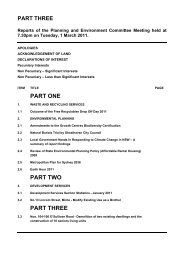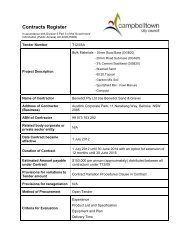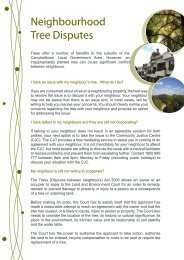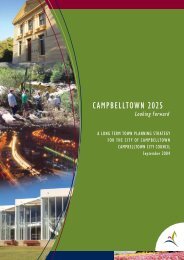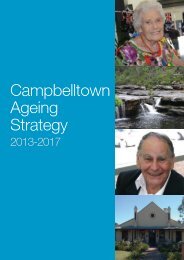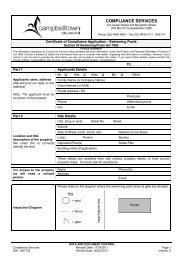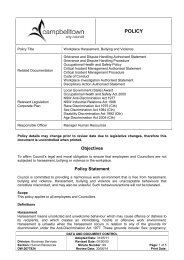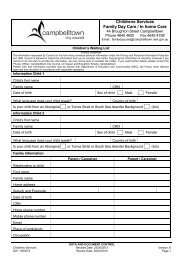PART ONE - Fishers Ghost
PART ONE - Fishers Ghost
PART ONE - Fishers Ghost
Create successful ePaper yourself
Turn your PDF publications into a flip-book with our unique Google optimized e-Paper software.
The CoffinThe Regulation generally requires the body to be contained in a coffin, that is, a rigid,leak proof container capable of securely holding the body. From an occupationalhealth and safety viewpoint, a coffin or enclosed bier is essential to address manualhandling, hygiene and general well-being concerns.A natural burial coffin would therefore need to comply with Regulation requirementsas well as be made from highly biodegradable and preferably renewable materials.BackfillThe requirement for a natural burial is not to compact backfill, so that the soil aroundthe coffin and body is aerated, thereby not inhibiting dissolution. If the backfill is notcompacted there will be ongoing subsidence for years, but especially in the first fewmonths after burial. When subsidence does occur, cemetery staff will need to returnto the site to “top it” with soil. Soil may need to be sourced from outside of thecemetery, thereby possibly compromising sustainability ideals.One way to avoid subsidence would be to leave a substantial mound over the grave,and allow that mound to be absorbed naturally over time; thereby ensuring existingnatural materials are not removed from the site. In traditional cemeteries suchmounds over graves can result in complaints from the bereaved family.Burial Plot LocationVisible permanent markers, such as headstones or plaques, are not ordinarily part ofa natural burial procedure. However, the Regulation and basic cemeterymanagement requires that the location of graves be accurately recorded.A favoured location method for natural burial plots is to survey them using the GlobalPositioning System (GPS). The general compromise is to record all the names ofthose buried in natural burial areas on a common rock or wall, usually located at itsentrance or on its perimeter.Potential for Natural Burials within Campbelltown Local Government AreaThe main difference between the Shoalhaven and Campbelltown Local GovernmentAreas (LGAs) is that there is no additional capacity for burials within theCampbelltown Local Government Area. Shoalhaven City Council own and manage anumber of crematorium / cemeteries within their LGA, and therefore are in a positionto conduct a natural burial trial in conjunction with their current activities.Campbelltown City Council does not own or manage any such facilities.At its meeting on 18 November 2008, Campbelltown City Council considered a reportwhich outlined issues relating to establishing a cemetery and/or crematorium in theLGA. That report outlined potential issues and impacts relating to the operation of anew crematorium / cemetery, and included a range of matters that Council wouldneed to properly consider in the determination of any such proposal.


